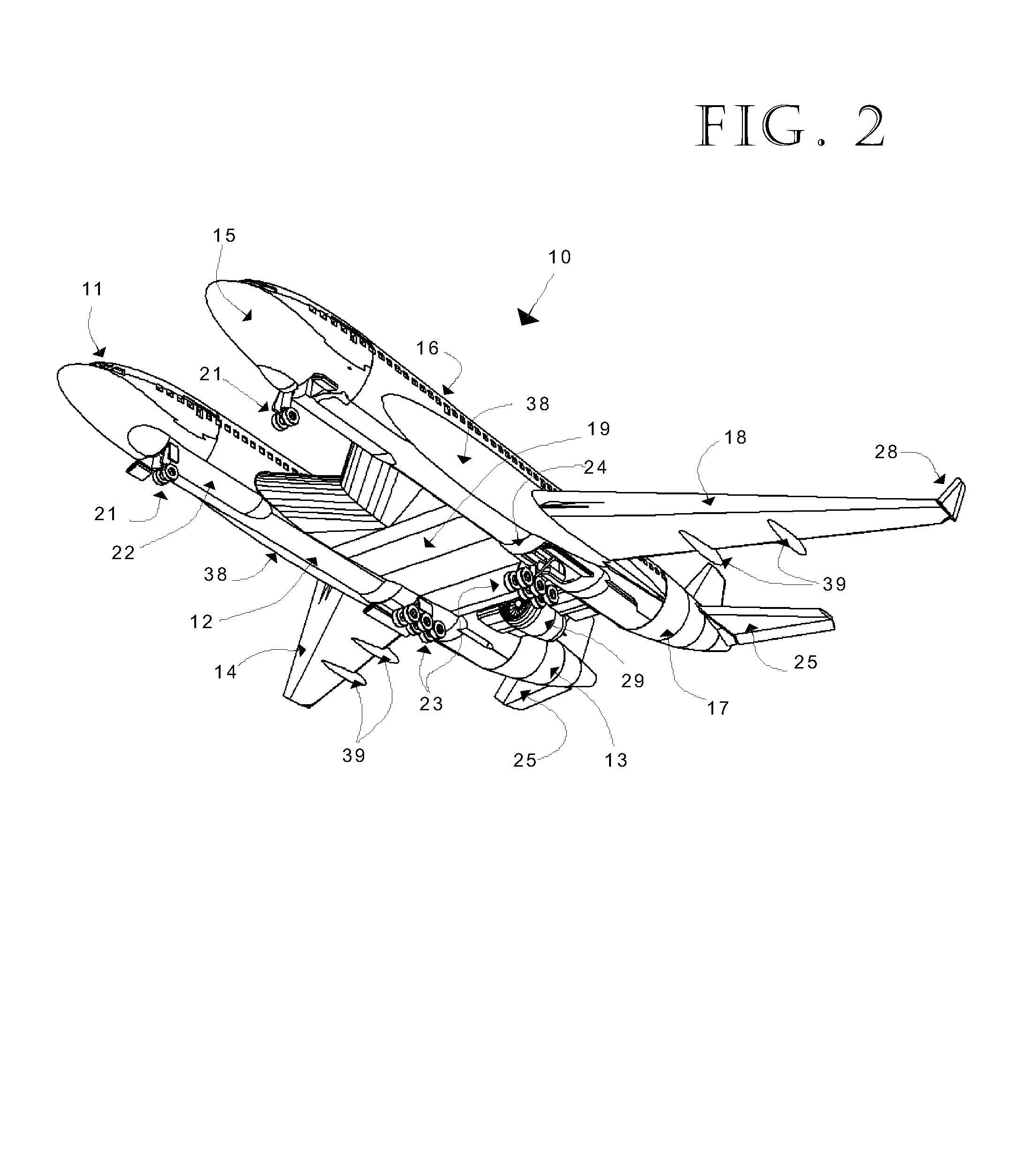Cross-wing Twin-Fuselage Aircraft
a twin-fuselage aircraft and cross-wing technology, applied in the direction of aircraft crew accommodation, air-flow influencers, transportation and packaging, etc., can solve the problems of large-scale service of such aircraft, affecting the propulsion, structural design and materials of aircraft, and not being viable in time to meet near-term needs. , to achieve the effect of lowering the drag coefficien
- Summary
- Abstract
- Description
- Claims
- Application Information
AI Technical Summary
Benefits of technology
Problems solved by technology
Method used
Image
Examples
Embodiment Construction
[0033]The aircraft (10) of this disclosure is presented with isometric views FIGS. 1-3, plan-views FIGS. 4-6, and cut-away detail views FIGS. 7-8.
[0034]Fuselage
[0035]The description of the fuselage concept is to show how very similar it is to the fuselage designs of the commercial airlines of today.
[0036]The fuselage of the disclosure aircraft (10) is just over 200 ft in length. The main deck provides seating accommodations for passengers and services FIG. 7. It is anticipated that passenger loading can be accommodated through two forward entrances (44,45) for each fuselage.
[0037]One of the twin fuselages, left or right, in the nose section (11 or 15) will contain the pilot cockpit cabin, equipped as other commercial aircraft, but with additional displays for scene visibility masked by the fuselage twin nose section, so viewing from the chosen cockpit need not compromised. The other fuselage nose section is available to provide passenger amenities, as airlines would so choose.
[0038]...
PUM
 Login to View More
Login to View More Abstract
Description
Claims
Application Information
 Login to View More
Login to View More - R&D
- Intellectual Property
- Life Sciences
- Materials
- Tech Scout
- Unparalleled Data Quality
- Higher Quality Content
- 60% Fewer Hallucinations
Browse by: Latest US Patents, China's latest patents, Technical Efficacy Thesaurus, Application Domain, Technology Topic, Popular Technical Reports.
© 2025 PatSnap. All rights reserved.Legal|Privacy policy|Modern Slavery Act Transparency Statement|Sitemap|About US| Contact US: help@patsnap.com



